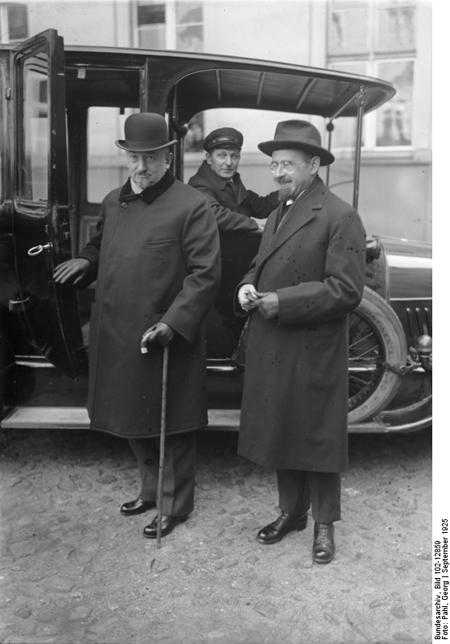













INTRODUCTION | DOCUMENTS | IMAGES | MAPS | EDITOR
|
Russian foreign minister Georgy Chicherin (left), who had signed the Treaty of Rapallo normalizing relations with Germany just two years earlier, traveled to Berlin in September 1925 to meet with German foreign minister Gustav Stresemann on the eve of his departure to Locarno. The Soviet Union, which was unsettled by the prospect of Germany’s integration into a Western anti-Bolshevik bloc, regarded any separate agreement between Germany and the Western Allies as a violation of the Rapallo treaty. It took a similar view of Germany’s entry into the League of Nations (of which the Soviet Union was not a member).
Chicherin’s pro-German foreign policy was greatly abetted by his friendship with Ulrich von Brockdorff-Rantzau, Germany’s ambassador to the Soviet Union, whose infamous remark the previous December about “driving Poland back to its ethnographic frontiers” [Polen auf seine ethnographischen Grenzen zurückzudrängen], had been interpreted by the Russians as a sign of Germany’s interest in military cooperation with the Soviets. Russian concerns would be addressed in the Treaty of Berlin, which was signed after the ratification of the Locarno Treaty and just prior to Germany’s entry into the League of Nations in September. Nikolay Krestinsky (right) was the Russian ambassador to Germany and a signatory to the Treaty of Berlin on April 24, 1926. One of the defendants in the Trial of the Twenty One, the last of the Moscow show trials, he was executed on March 15, 1938.
© Bundesarchiv |
 print version
print version return to image list
return to image list previous image
previous image
